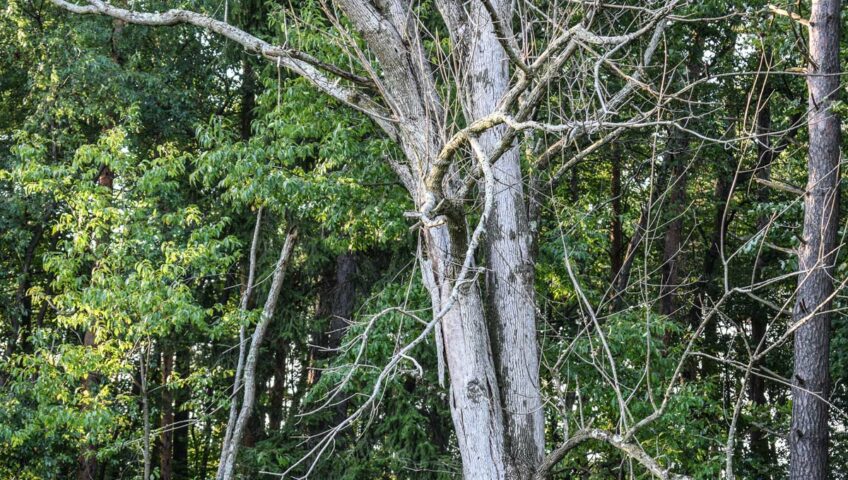What You Need to Know About Emerald Ash Borer Infestations in Nebraska
If you have any ash trees on your property, there is a growing threat you need to be aware of. Nebraska is currently in the middle of an infestation that has the potential to destroy millions of trees. Being educated about emerald ash borers can help you take steps to prevent this dangerous invasive species from wreaking havoc on your property.
Emerald Ash Borers: An Overview
Emerald ash borers are an insect native to Asia that first started infesting Michigan back in 2002. These bugs are a type of small insect that is just around 13 millimeters long and only lives about a year in full, but they have caused a lot of damage.
You can identify emerald ash borers because they have a long, narrow body with two bronze-green wings and large black eyes along the head. The adults lay eggs in ash trees that hatch into milky white larvae made up of short, triangular segments. As the larvae grow, they eat the wood of the ash tree and then bore a hole out of the tree to escape once they mature.
Nebraska Confirms Emerald Ash Borer Infestation
When the presence of emerald ash borers was first discovered in the United States back in the early 2000s, the government quickly made moves to quarantine the insects. Sadly, these invasive little pests are hard to spot, and they can be transported around the states through infected ash tree products.
In 2016, emerald ash borers were spotted in Omaha, Nebraska. Since then, they have continued to spread throughout the state. With over 44 million ash trees, Nebraska is particularly vulnerable to emerald ash borers infestations. To try to prevent the spread, the Nebraska Department of Agriculture has quarantined the movement of wood from Douglas, Sarpy, Cass, Washington, and Dodge Counties.
According to the Nebraska Tree Service, anyone within 15 miles of an emerald ash borer infestation needs to exercise caution. This means that everyone in the Lincoln area may need to be worried for the health of their trees. Treating a tree is usually cheaper than cutting it down, but tree owners need to act fast if they want to have time to treat the tree before the infestation worsens. On average, 70 percent of unprotected ash trees are dead within four years of an infestation starting.
How to Tell If You Have Emerald Ash Borers
The best time to treat emerald ash borers is in the early Spring and Summer, so it is important to figure out whether not you have an infestation. Here are a few tips to make things easier.
Identifying Ash Trees
Of course before you can start looking for emerald ash borers, it is helpful to see whether or not you have an ash tree in your yard. Ash trees are a family of medium large trees that sprout whitish flowers in the Spring. They have distinctive smooth or diamond patterned bark in a grey shade and a wide, branching structure. If you have an ash tree, you may notice that the tree branches and leaves grow directly opposite each other instead of alternating along the main branch. Keep in mind that emerald ash borers can threaten any type of ash, including both the deciduous and evergreen versions.
Signs of Emerald Ash Borers
Here are a few signs that one of your ash trees might be infected with borers:
- Thinning canopies and reduced leaf growth.
- New growth of branches along the base of the trees.
- Damaged bark due to woodpeckers trying to eat emerald ash borer larvae.
- D shaped exit holes in the bark that are usually around ⅛ inches in width.
- Bark that splits vertically.
- S-shaped tunnels beneath the bark that are packed with a fine dust.
- White larvae or green adults on the trees.
Not all ash trees will show signs of an infestation, so even if you do not see any of these symptoms, it is important to get them inspected by a professional arborist if you live in an area with emerald ash borers.
Treatment Options for an Emerald Ash Borer Infestation
When it comes to dealing with emerald ash borers, there are a few different options. The most drastic choice in emeril ash bore treatment is removing the tree altogether. This is usually only recommended if the tree is so irreparably damaged that it is dying and becoming a threat to nearby power lines, homes, or other trees.
A more affordable emeril ash bore treatment that lets you save the trees is chemical insecticides. These treatments should be done between March and mid-June to properly kill the emerald ash bore larvae. Depending on your situation and personal preference, you can pick between insecticides injected into the tree trunk, soaked into the ground around the trunk, or sprayed on the entire tree. These treatments need to be repeated to be as effective as possible, so you will need to remember to apply the treatment every year or two to keep the ash borers from coming back.
If you have ash trees in Lincoln, Nebraska, prompt treatment can save your trees before they die. At Liberty Lawn and Landscape, we have professional licensed state of Nebraska arborists who can evaluate your trees and let you know more about treatment options for your unique situation. Contact us today to schedule your free evaluation.

